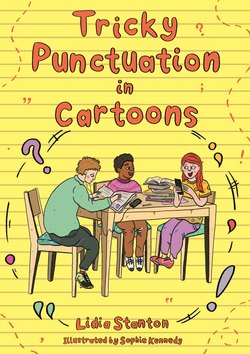Читать книгу Tricky Punctuation in Cartoons - Lidia Stanton - Страница 10
На сайте Литреса книга снята с продажи.
ОглавлениеAh… They are not words, but they tell us a lot about the sentence we are reading. Punctuation might still be a problem for robots but shouldn’t be for humans. As soon as children become readers, they know when to change their voice depending on the punctuation mark they see in the sentence.
WHY ROBOTS STRUGGLE TO READ LIKE HUMANS
The human voice can go up and down – we call that intonation.
We also use our hands and arms, and move heads during speaking – this is called gesticulation (because we use gestures). The challenge is to teach robots to use believable intonation and gesticulation. Think of the two – intonation and gesticulation – as uniquely human paints that colour our speech. They make it more interesting for our listeners and readers, and help them focus on what we are saying.
OVER TO YOU
A sentence starts with a capital letter and needs at least one punctuation mark. Three different punctuation marks can be placed at the end of a sentence (not all at once!). Do you know which ones?
DID YOU KNOW?
If you have ever heard that punctuation marks are used ‘where we would pause during speaking or reading’, that is not entirely correct.
Yes, we do pause after full stops, question marks and exclamation marks – they are all at the end of a sentence. When punctuation marks are inside sentences, it’s a bit more complicated. So, for now, it’s best to think of pausing mostly at the end of the sentence.
